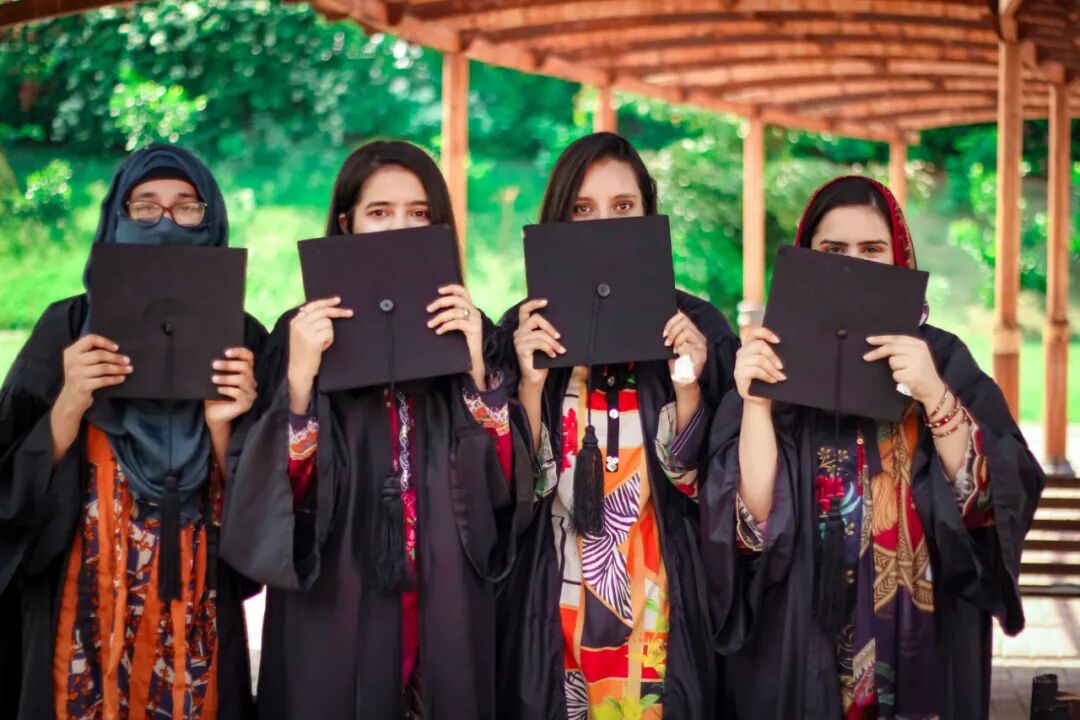

Today, girls' education is being sacrificed due to the country's debt pressures.
Image source:Areej Amin/Unsplash
Lucia Fry
Senior Director of Policy and Advocacy at the Malala Fund
Naomi Nyamweya
Manager of Education Finance and Economic Research & Policy at the Malala Fund
In 2024, in the 10 countries where girls face the most significant barriers to education, debt repayment costs averaged four times higher than spending on education.
When heavy debt burdens force countries to prioritize debt repayment over providing essential social services, girls' needs often become the first to be sacrificed.
Should we continue forcing countries to choose between "paying off debts" and "investing in the next generation," or are we ready to rebuild a financial system centered on human development?
The Malala Fund will link girls' education indicators withInternational Development Finance CorporationAn analysis comparing the debt data reveals that, by 2024, the debt-servicing expenditures in the 10 countries facing the most severe obstacles to girls' education averaged four times higher than their education budgets. This is not only unjust but also unsustainable. Unless the international community shifts course, this trend will only worsen in the years ahead.Severely hindering progress on global gender equality, development, and economic resilience.
In low-income and lower-middle-income countries,The government is grappling not only with an ever-growing debt burden but also with climate disasters, conflicts, rising poverty, and soaring inflation. In this challenging environment, education budgets have been slashed, classrooms are closing, school meals have vanished, teachers are leaving the profession in droves, and even mental health support services have disappeared. Far from being a safe haven for learning, schools have become dilapidated—and for girls, they’ve grown especially unsafe.
These are all consequences of the global financial system's impact on the real world—it’s failing the next generation—and especially girls.
Why we must pay attention to this issue now
United NationsSustainable Development GoalsProgress toward achieving the goal of universal secondary education by 2030 has been slow. Globally, millions remain out of school.More than 122 million girls, most of whom are adolescents from low-income and lower-middle-income countries. In sub-Saharan Africa,The number of out-of-school girls is on the rise.Millions of people are unable to access secondary education—not because they lack ambition, but due toThe political and financial decisions they cannot influence.
Debt is at the heart of this crisis.International Development Finance CorporationIt was found that, as of June 2024, in developing countries with available data, more than 30% of nations are spending resources on debt repayment that exceed the combined budgets allocated to education, health, climate initiatives, and social protection. This situation is partly due to public investment in education remaining far below the global consensus target of either 20% of the national budget or 6% of GDP. In too many countries, education budgets are barely half of this benchmark—and are even declining further.
Additionally, heavy debt has also forced the government to implement austerity measures.As part of the International Monetary Fund loan agreements, countries typically implement measures such as spending caps, public-sector wage freezes, and regressive tax increases. These policies often disproportionately affect women and girls—Their access to schools, nutrition programs, and health services has been further eroded.
When school budgets are cut, girls are the first to be sacrificed.
When education and support systems lack sufficient funding, girls face particularly severe consequences.Without school meals, they go hungry, as families often prioritize limited resources toward boys. Lacking access to affordable sanitary pads or clean, safe toilets, many girls are forced to stay home during their periods. And even when they manage to attend school, the long and unsafe journeys make them more vulnerable to harassment or violence. Under financial strain, families typically choose to fund their sons' education instead.
Last year, the Malala FundTo more than 800 girls from 30 countriesSeeking their input on educational needsTheir voices were clear and firm:They yearn for safe, inclusive, and empowering education.They need funding to cover tuition and fees, as well as safe transportation and reliable routes, teachers who truly understand their lives, menstrual health support, and access to courses and digital resources that help them prepare for future leadership roles and real-world challenges.
These are not luxury items,Instead, it’s the most fundamental guarantee of learning. When a country is forced to prioritize debt repayment over providing essential social services, girls’ needs are the first to be sacrificed.
Debt has exacerbated inequalities throughout the girl's life.
Insufficient investment in education and social services leads to consequences that begin in childhood and persist throughout life. Young girls often miss out on preschool education and nutritious meals; during adolescence, financial strain forces them to drop out of school or marry prematurely. As adults, their lack of education makes them more vulnerable to low-paying, insecure informal jobs—or even pushes them entirely out of the workforce due to caregiving responsibilities. This vicious cycle isn’t accidental—it stems from global policy choices—but we have the power to break it.
Debt relief once worked.
In the late 1990s, the Heavily Indebted Poor Countries (HIPC) Initiative relieved the world’s lowest-income nations of $100 billion in debt, leading to transformative outcomes in the education sector. Between 1990 and 2015, participating countries saw primary school enrollment rise by 21.7%, with gender parity in enrollment improving by 8.7% and primary school completion rates increasing by 13.7%.
However, the only currently coordinated global debt restructuring mechanism—the G20 Common Framework for Debt Treatments—However, it has yielded very little result. The process is slow, opaque, and fails to compel private creditors—many of whom already hold a significant portion of the sovereign debt—to participate. Even more concerning, the framework ignores gender issues altogether, while current debt sustainability assessments fail to account for a country’s ability to invest in areas like education, healthcare, and gender equality.
What changes do we need to make?
To free up sufficient resources for girls' education, policymakers must redesign the global debt system to serve the people—rather than creditors. The Malala Fund’sNew Policy BriefOutlines the five reforms of the G20 Common Framework, which will help shift this balance:
1. Reducing debt-servicing capacity to a sustainable level: The restructuring must lower debt payments to no more than 10–15% of national income, allowing for social investment.
2. Incorporating gender and human rights considerations into debt assessments: We should not rely solely on economic indicators, but also evaluate a country’s capacity to provide education, healthcare, and gender-equal services.
3. Guaranteeing socially responsible spending to promote gender equality: The restructuring agreement should establish a minimum threshold for social investments, particularly those aimed at improving the lives of girls.
4. Suspension of Debt Repayments During Negotiations: During restructuring talks, countries should be allowed to temporarily halt debt repayments to both public and private creditors.
5. Enhancing Transparency and Predictability: The "Common Framework" should include binding commitments and clear debt-reduction targets to help countries plan effectively.
The Cost of Inaction
Investing in girls' education is one of the most effective and cost-efficient development interventions. When girls complete secondary education, they are more likely to delay marriage, have healthier children, fully participate in economic activities, and strengthen democratic institutions. Moreover, they are better positioned to take on leadership roles, drive innovation, and hold decision-makers accountable.
The World Bank's 2018 reportA report found that if every girl worldwide could receive 12 years of quality education,The global economy could see an annual boost of $15 to $30 trillion in women’s productivity and income.If we allow the debt crisis to continue devouring developing countries' resources, the world will lose one-seventh of young girls' opportunities to thrive—not because resources are lacking, but because global financial rules simply aren’t working for them.
The choices ahead are not just economic—they’re also moral, political, and strategic. Do we continue to leave our nation caught between repaying debts and investing in our children, or do we choose to rebuild a financial system centered on human development?

The above content solely represents the author's personal views.This article is translated from the World Economic Forum's Agenda blog; the Chinese version is for reference purposes only.Feel free to share this in your WeChat Moments; please leave a comment at the end of the post or on our official account if you’d like to republish.
Editor: Wan Ruxin
The World Economic Forum is an independent and neutral platform dedicated to bringing together diverse perspectives to discuss critical global, regional, and industry-specific issues.
Follow us on Weibo, WeChat Video Accounts, Douyin, and Xiaohongshu!
"World Economic Forum"


